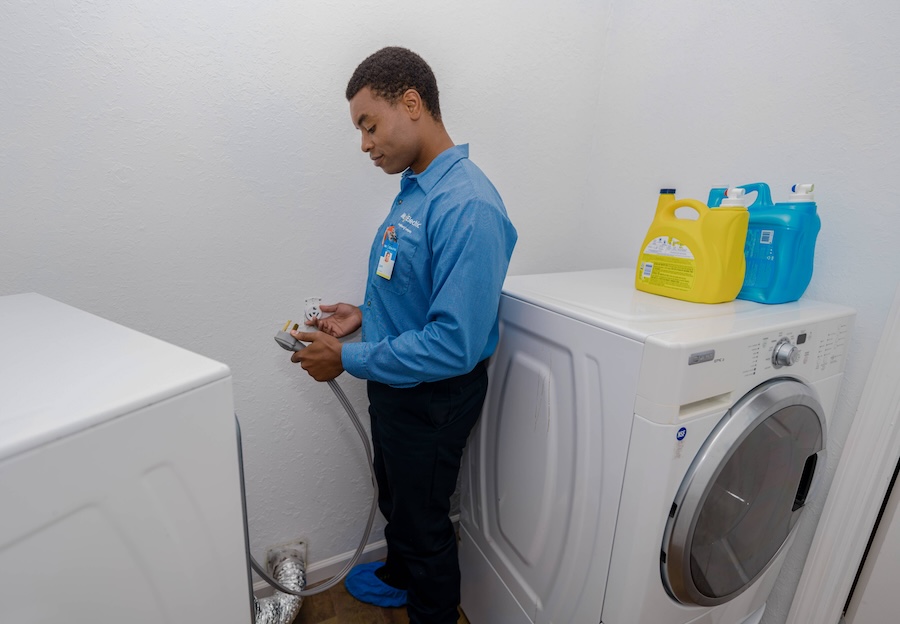Emergency Certified Electricians in Dallas, TX.
Call this Wednesday to Get 10% OFF
Emergency Certified Electricians in Dallas, TX.
Call this Wednesday to Get 10% OFF

Extension cords come in handy in certain situations, such as powering tools in a garage, extending reach for holiday lights, or providing electricity to devices when outlets are limited or inconveniently located. Whether you're working on a home improvement project or setting up outdoor entertainment equipment, the right extension cord can offer flexibility and convenience. However, they should always be used with caution and for temporary purposes only to avoid potential hazards like overloading, overheating, or tripping risks.
In this article, the electricians at Mr. Electric share tips on how to safely use extension cords and avoid overloading your outlets. When you need electrical outlet repair or safety inspections, we are the experts you can count on to deliver reliable services.
Not all extension cords are created equal. Before you plug in, make sure the cord you’re using is rated for the device you want to power. Light-duty cords are suitable for small electronics like lamps or chargers, while heavy-duty cords are designed for power tools, space heaters, and other high-wattage devices. Always check the cord’s gauge (thickness) and length—thicker and shorter cords can handle more current safely. Never use an indoor-rated extension cord outside; outdoor cords are specifically built to withstand moisture, temperature changes, and rougher conditions.
One of the most dangerous extension cord mistakes is plugging multiple cords together—also known as daisy-chaining. This practice increases resistance and heat, raising the risk of overheating and fire. In the same way, plugging too many devices into one cord or power strip can overload the circuit. Each circuit in your home has a limit, and drawing more power than it can handle may cause the breaker to trip or the wiring to overheat. Always be mindful of the total wattage of the devices you’re plugging in and keep it well below the cord’s capacity.
Before using an extension cord, inspect it for visible signs of wear, such as frayed wires, cracked insulation, or bent prongs. Damaged cords should never be used, as they pose a serious shock and fire hazard. Keep cords away from high-traffic areas to prevent tripping accidents and damage from foot traffic. If a cord must run across a walkway, use cord covers or tape it down securely.
Extension cords are meant for temporary use only. If you find yourself depending on them daily, it’s a sign that you need additional outlets or a more permanent wiring solution. Over time, relying on extension cords can stress your electrical system and increase the risk of a fire. Instead, call a licensed electrician to install more outlets or upgrade your home’s wiring if needed.
Even when a device is turned off, electricity can still flow through an extension cord that’s plugged in. To minimize the risk of fire and reduce energy waste, unplug extension cords when they’re not in use. Never leave cords plugged in overnight or when you're away from home, especially if they’re connected to high-wattage appliances.
Looking for a professional electrical service provider to help you install dedicated circuits in your home? Have you noticed signs of a faulty electrical outlet? Call Mr. Electric for all your residential and commercial electrical needs. We offer a wide range of electrical services, including electrical outlet repair, rewiring, electrical outlet replacement, electrical safety inspections, and many more.